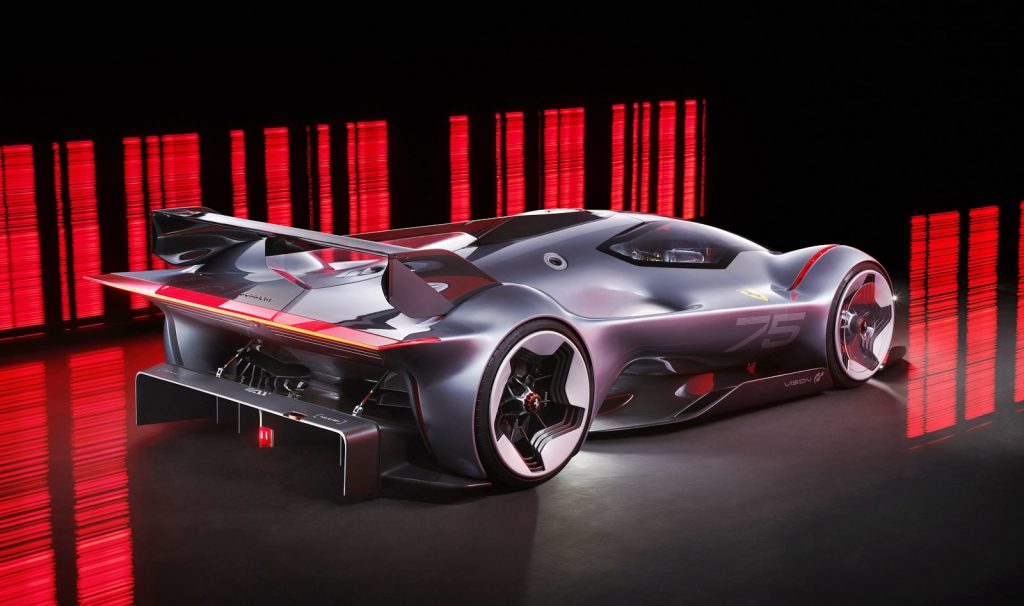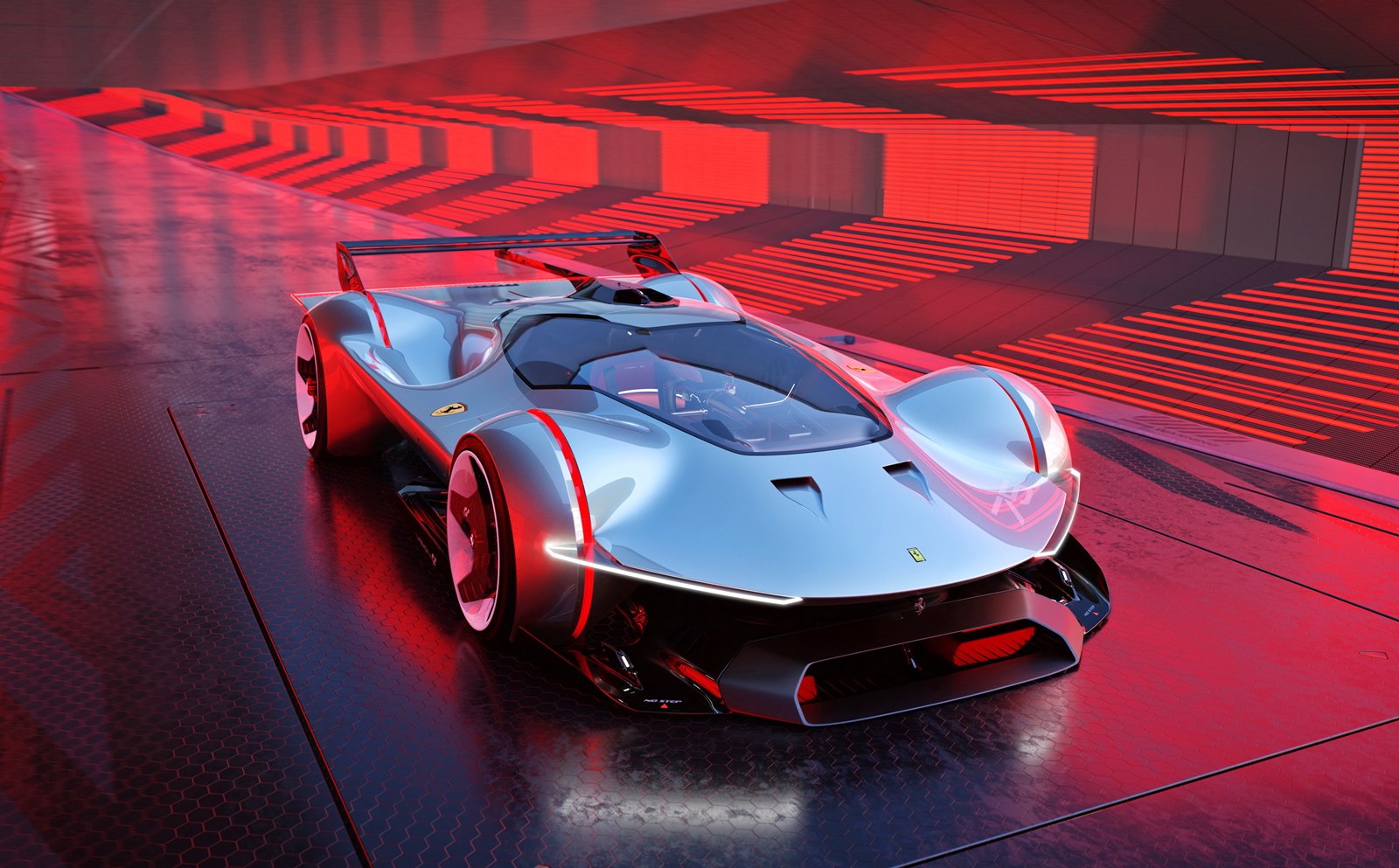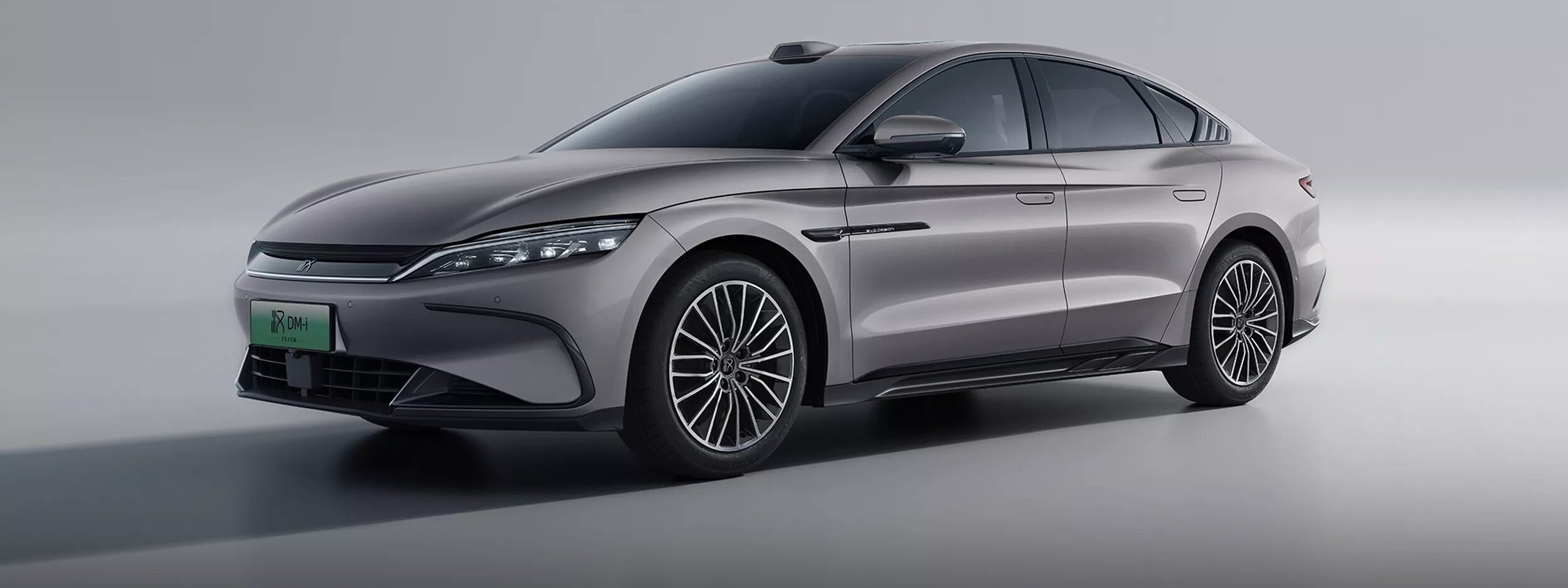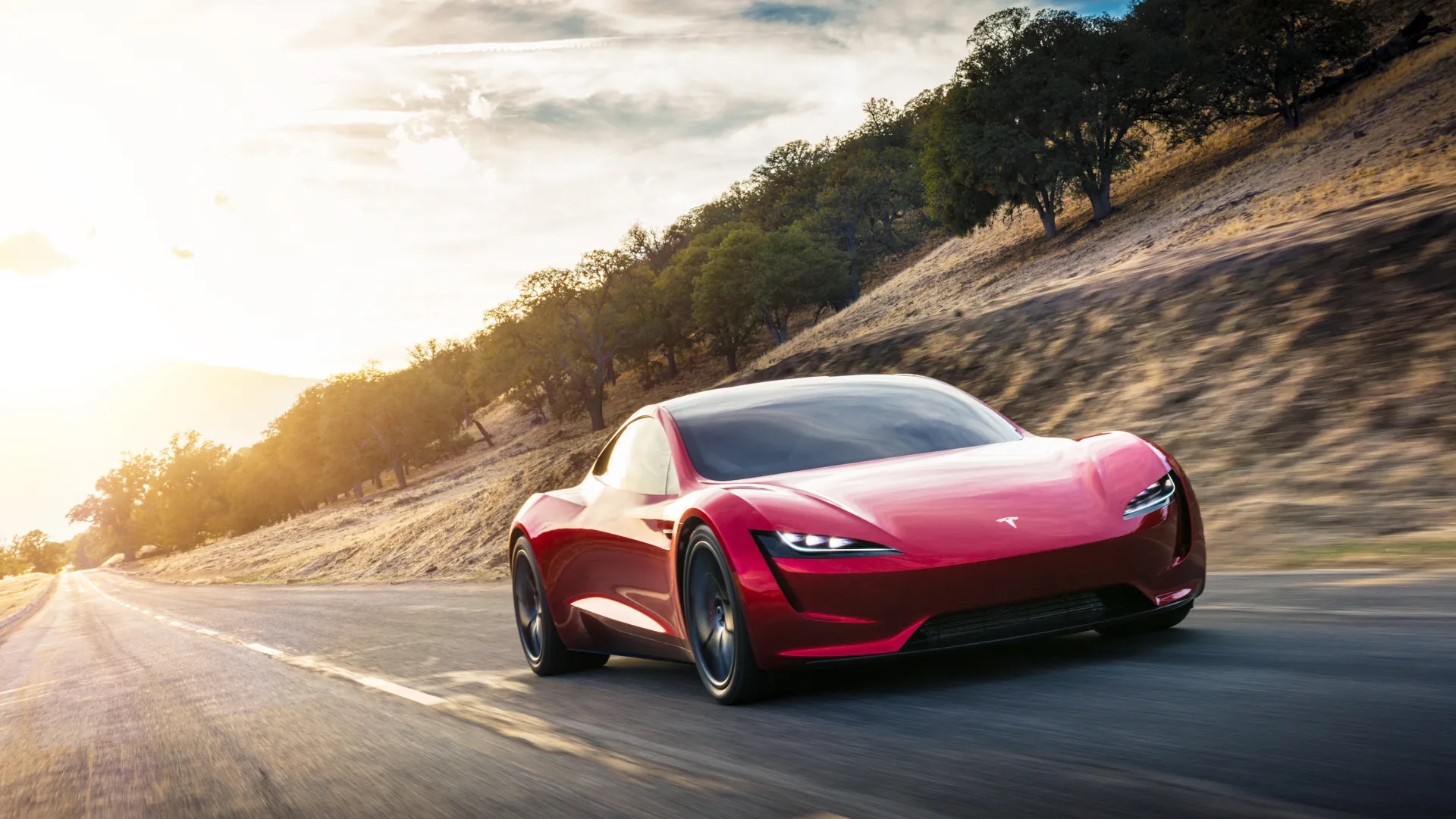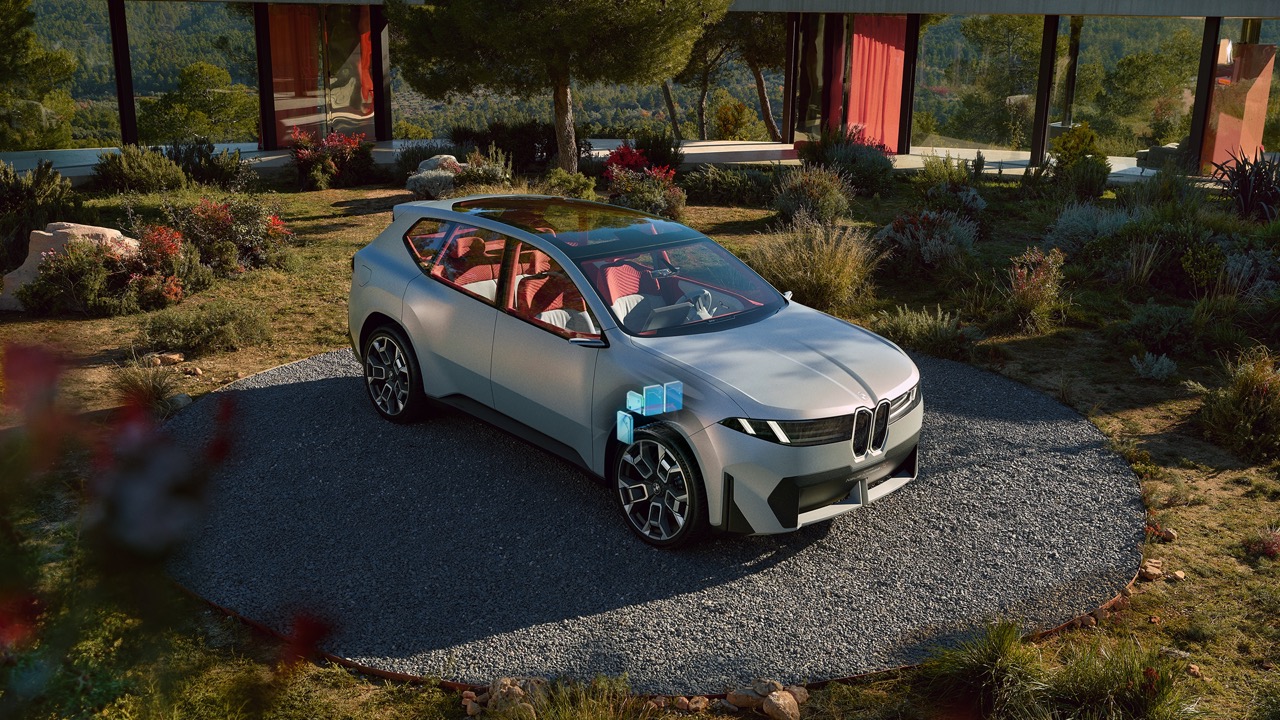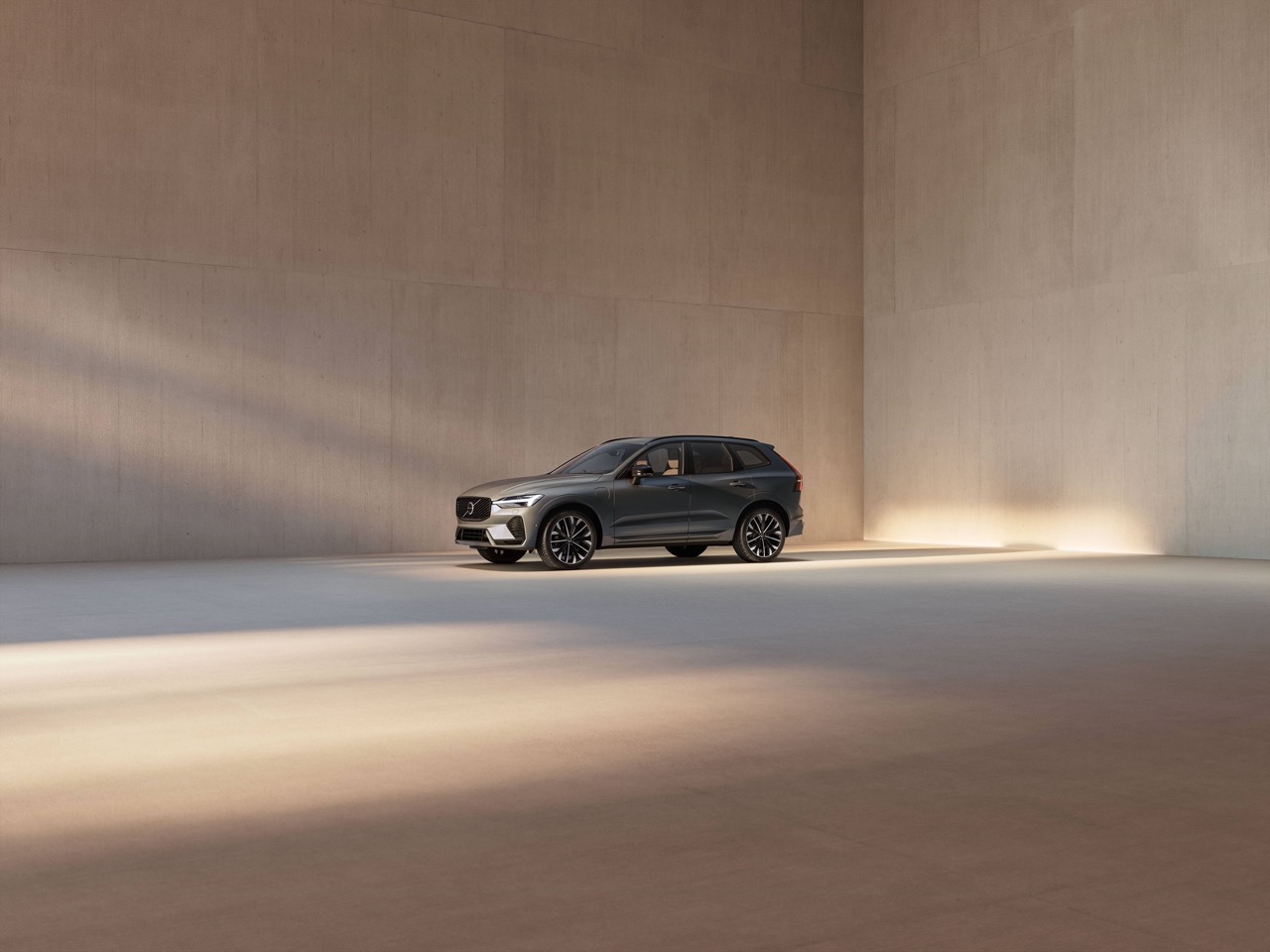To mark the closing of the 75th anniversary celebrations of the time when Ferrari’s first-ever racing car, the 125 S, exited the factory gates in 1947, the sportscar maker has unveiled the Ferrari Vision Gran Turismo. However, this closed-wheel single-seater is not a production model: it is the first Ferrari concept car created specifically for the virtual motor sport world.
This model signifies an important step for Ferrari in the virtual environment, while also redefining its stylistic language. It represents a futuristic design manifesto for Ferrari’s road and racing cars, a stimulus for both the engineers and drivers (real and virtual) of tomorrow.
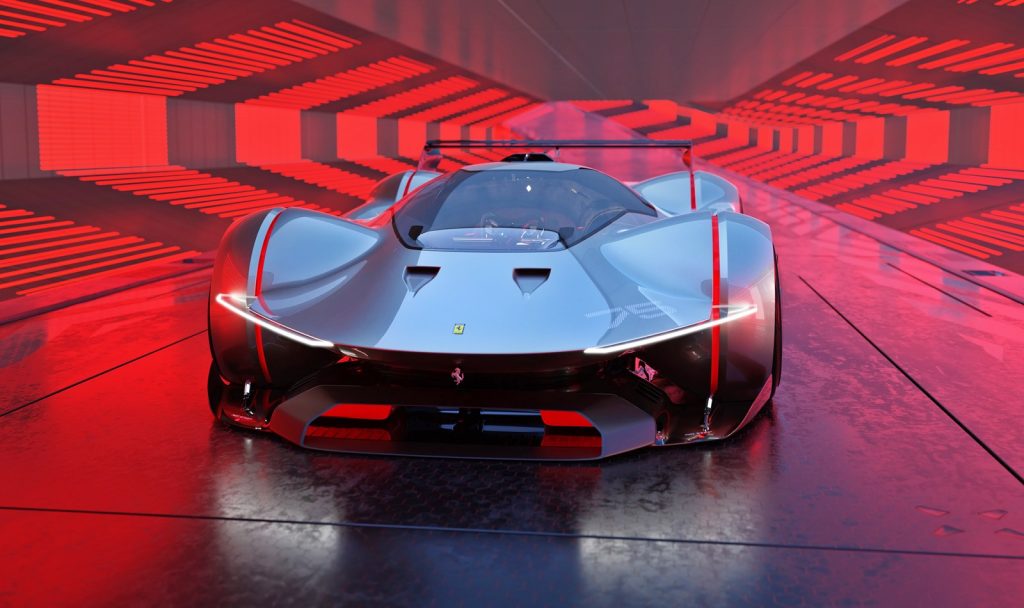
The Vision Gran Turismo’s design was penned by the Ferrari Centro Stile and takes its inspiration directly from legendary 1960s and 1970s Ferrari Sports Prototypes. The car succeeds in its stylistic mission by embodying the DNA of masterpieces such as the 330 P3 and 512 S, while also giving a glimpse of the future evolution of closed-wheel racing cars.
The design of the Vision Gran Turismo was conceived around the idea of a speed form with very geometric, sharp, angular lines that nevertheless underlie a very organic shape. This contrast has a disruptive effect, as the plasticity of the external and internal surfaces binds with the geometric precision of the lines, creating a car with an immediately recognisable character. The architecture centres around an advanced aerodynamic concept based on two imposing side channels.
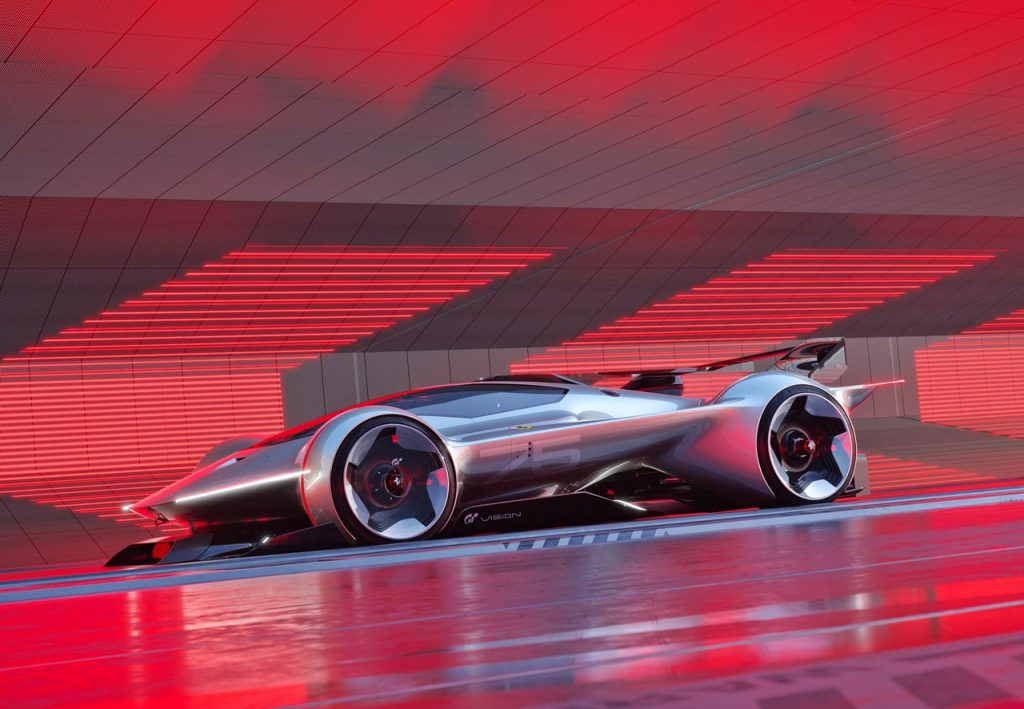
This solution has been patented by Ferrari and directs the airflow from the front underbody, around the cockpit and over the striking side pods. This solution generates extremely efficient aerodynamic downforce, thanks to the variation in momentum and the suction created by the central part of the underbody.
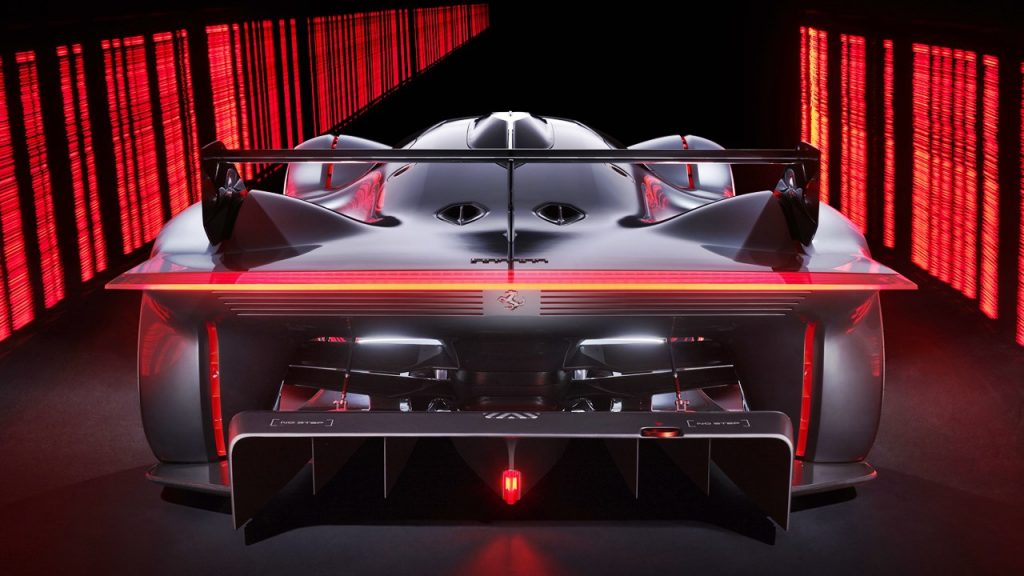
The rear aerodynamics were developed using concepts inspired by the Ferrari 499P, particularly in terms of the diffuser and the rear biplane wing. Lastly, the front S-Duct and the integrated air vents on the wheelarches further boost aerodynamic efficiency and high-speed stability.

The 1,250 kg concept car has 120-degree 3-litre turbo V6 architecture adopted on the 296 GTB, 296 GTS and 296 GT3 (and also the new 499P). However, as there were no technical regulation constraints to comply with, it was further developed to produce extreme performance.
The maximum output is 1,030 ps at 9,000 rpm, with an additional 240 kW (326 ps) available from 3 electric motors, one on the rear axle and one on each of the front wheels. Ferrari worked with the Gran Turismo people to ensure that the exhilarating engine sound of this powerful powertrain is faithfully reproduced to give sim racers an even more realistic racing experience.
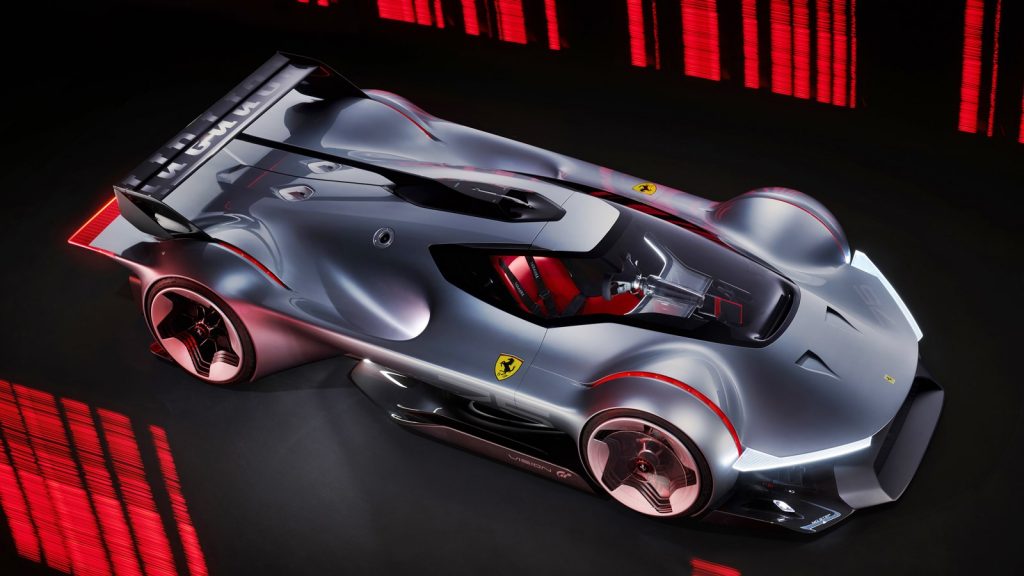
The car also boasts hybrid technology that benefits from the unique expertise in electric boost and energy recovery strategies Ferrari has developed in Formula 1. Constantly balancing the state of charge of the battery allows the driver to make full use of the combined power available from the engine and electric motors, so that maximum performance is available both during qualifying laps as well as over consecutive racing laps.
The suspension is designed to maintain the tyre contact patch to ensure maximum traction, thereby allowing the Vision Gran Turismo to deliver 1,100 Nm of rear torque at the rear end. Cutting-edge electronic vehicle controls give the car superior cornering agility and handling.
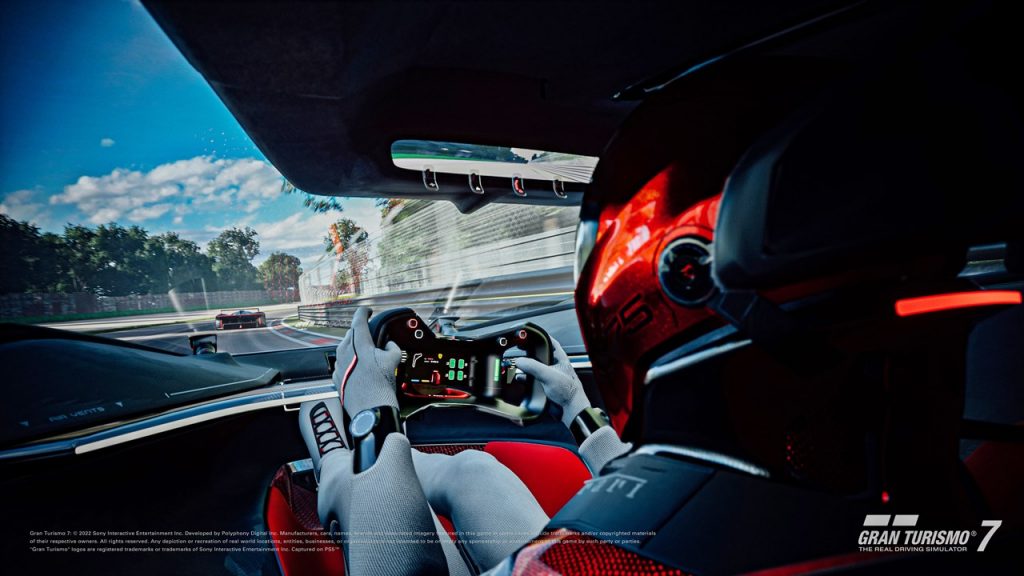
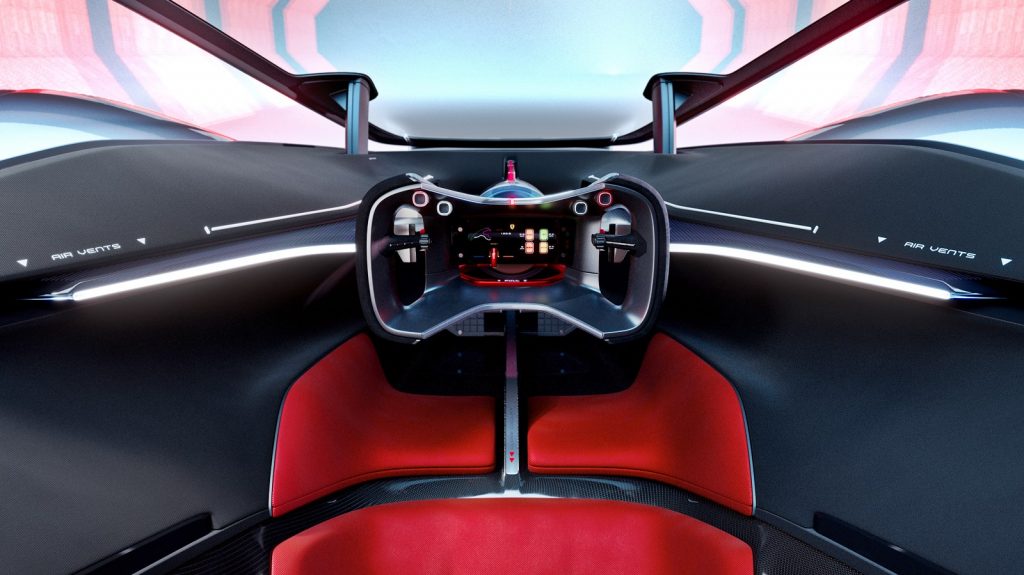
The interior design is an extension of the exterior, with a purist, minimalist approach delivering optimal functionality and driver ergonomics. The dashboard lines are clean and spare and, just like the see-through engine cover framing the hybrid V6 powertrain, incorporate transparent high-tech materials to reveal the mechanical components of the sophisticated modern steering wheel.
Unveiled during the Gran Turismo World Finals in Monte-Carlo, the Vision Gran Turismo will become available to all users of Playstation GT7 from December 23, 2022. Prior to that, the full-scale design study will make its first public appearance at the Ferrari Museum in Maranello, where it will be displayed alongside the current exhibition dedicated to the marque’s exclusive one-off models until March 2023.
